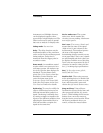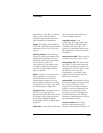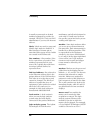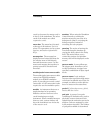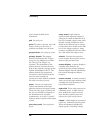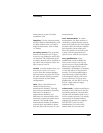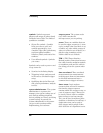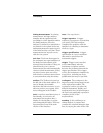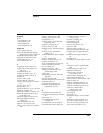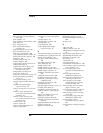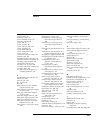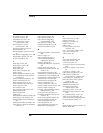
220
Glossary
symbols Symbols represent
patterns and ranges of values found
on labeled sets of bits. Two kinds of
symbols are available:
• Object file symbols - Symbols
from your source code, and
symbols generated by your
compiler. Object file symbols may
represent global variables,
functions, labels, and source line
numbers.
• User-defined symbols - Symbols
you create.
Symbols can be used as pattern and
range terms for:
• Searches in the listing display.
• Triggering in logic analyzers and
in the source correlation trigger
setup.
• Qualifying data in the filter tool
and system performance analysis
tool set.
system administrator The system
administrator is a person who
manages your system, taking care of
such tasks as adding peripheral
devices, adding new users, and doing
system backup. In general, the
system administrator is the person
you go to with questions about
implementing your software.
target system The system under
test, which contains the
microprocessor you are probing.
terms Terms are variables that can
be used in trigger sequences. A term
can be a single value on a label or set
of labels, any value within a range of
values on a label or set of labels, or a
glitch or edge transition on bits
within a label or set of labels.
TIM A TIM (Target Interface
Module) makes connections between
the cable from the emulation module
or emulation probe and the cable to
the debug port on the system under
test.
time-correlated Time correlated
measurements are measurements
involving more than one instrument
in which all instruments have a
common time or trigger reference.
timer terms Logic analyzer
resources that are used to measure
the time the trigger sequence
remains within one sequence step, or
a set of sequence steps. Timers can
be used to detect when a condition
lasts too long or not long enough.
They can be used to measure pulse
duration, or duration of a wait loop. A
single timer term can be used to
delay trigger until a period of time
after detection of a significant event.




